Throughout history, rivers and oceans have been pivotal to human life, serving as the lifeblood of civilization, the origin of ancient settlements, and the foundation of countless cultures. Human existence is intrinsically linked to water, which provides food, sustenance, transportation, and countless other vital resources. Thus, Hinduism reveres rivers with the highest sense of gratitude, honouring them as goddesses and guardians of life. In Sanatan Dharma, the Yamuna River holds an esteemed place, embodying divine purity and protection. The Yamunotri Temple, dedicated to Goddess Yamuna, symbolizes this veneration. Situated in the Garhwal Himalayas at an altitude of over 10,000 ft in Uttarakhand, it draws pilgrims who seek both—her blessings and a deeper connection to nature's sacred force.
Tradition holds that Goddess Yamuna is the sister of Yama, the god of death. She has the power to protect her devotees from untimely death. Pilgrims make the arduous trek to the Yamunotri Temple, believing that bathing in her holy waters will purify the soul and offer divine protection. Year after year, millions make the sacred Yamunotri Yatra, driven by faith, devotion, and the promise of peace that only this divine river can bestow.
Yamuna River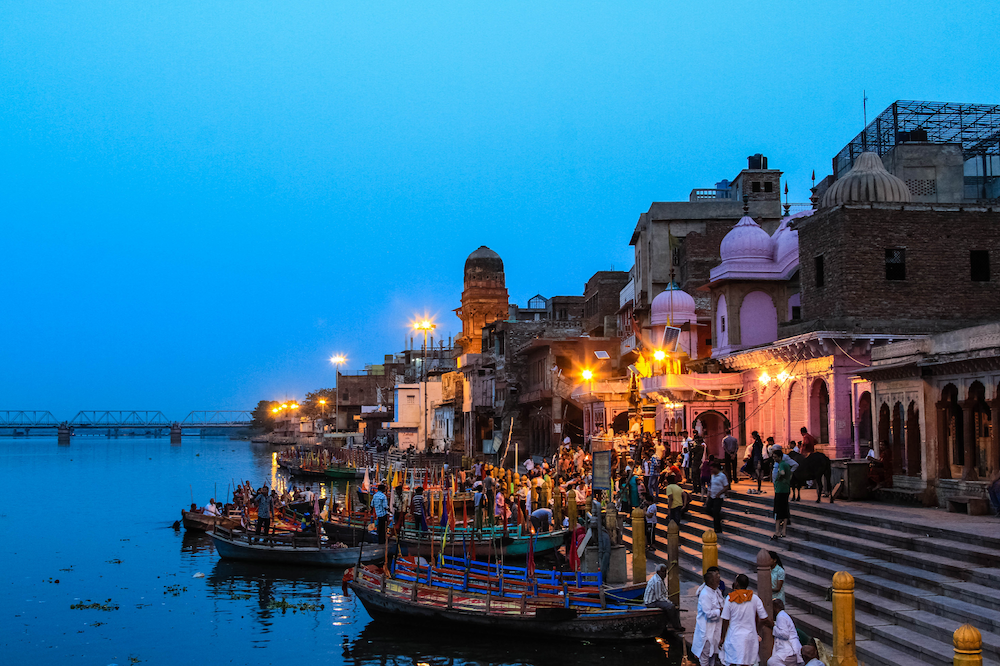
But what is it about the Yamunotri Temple and the Yamunotri River that draws millions of pilgrims every year? Could it be the belief that a single bath in the holy waters of Yamuna grants protection from death itself, or is it the spiritual peace that envelops those who seek solace by its divine banks? What lies at the heart of Yamunotri Temple and its unparalleled pull? Let’s explore the sacred significance of Yamunotri and uncover the spiritual force that flows through it.
A vast ocean of religious and cultural folklore swirls around the Yamuna River. It’s one of the seven tributaries of the Ganges, or Ganga. Like the Ganga, Hindus revered the Yamuna River as a divine mother as it nurtures and shapes Indian civilization. Her sacred waters have been a source of sustenance and spiritual significance for centuries. Here are some of the most revered folk tales and religious history surrounding the Yamuna River.
Nestled in the Garhwal Himalayas, the Yamunotri Temple is a venerated shrine to Goddess Yamuna. Pilgrims flock to the Yamunotri Temple, seeking her divine grace and protection, especially from the wrath of her brother, Yama—the god of death. According to legend, Yamuna, as the sister of Yama, granted the boon that anyone who bathes in her waters will be shielded from untimely death, making this a sacred destination for devotees seeking purification and peace.
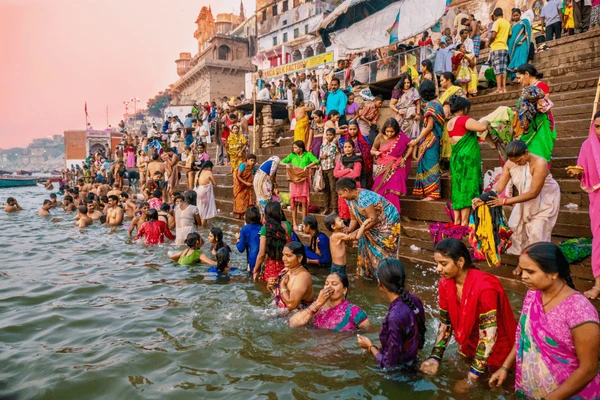
Yamunotri Temple
The Triveni Sangam, where the Yamuna meets the Ganges and the mythical Sarasvati River, is considered the most sacred confluence in Hinduism. Pilgrims believe that taking a dip here purifies the soul and brings spiritual liberation. Every four years, the Kumbh Mela is celebrated at this sacred site, drawing millions of devotees seeking divine blessings. This confluence represents the unity of life, spirituality, and the eternal flow of the river, further cementing Yamuna’s status as one of the most revered and important rivers in Hindu mythology.
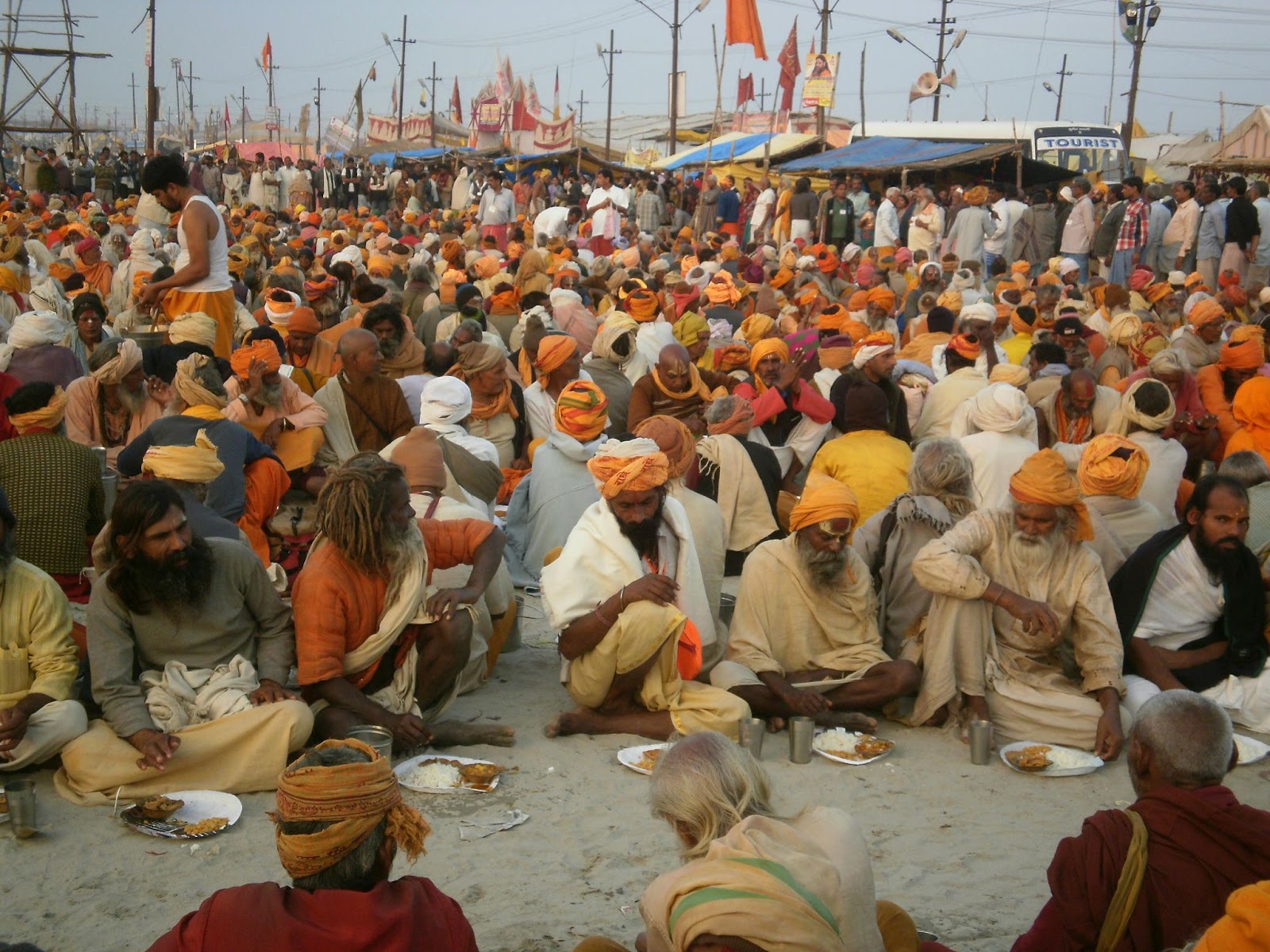
Triveni Sangam
In ancient texts, Goddess Yamuna was initially known as Yami, a name signifying her connection to life. Over time, she came to be called Kalindi, which carries a dual significance. Kalindi is derived both from her parentage—she is the daughter of Surya, the Sun God, and Sanjna, the Cloud Goddess—and from the Kalinda mountains, considered the sacred birthplace of the river. Yamuna is also the twin sister of Yama, the god of death, and shares an unbreakable bond with him, embodying the "Lady of Life."

Goddess Yamuna
The Yamuna is revered as a river of purification. It is said that bathing in or drinking her waters absolves the sins of devotees, cleansing the soul and body alike. According to the Agni Purana, Yamuna is depicted as a goddess with a dark complexion, standing upon her steadfast tortoise mount, holding a water pot that signifies the life-giving essence of the river. Ancient scriptures further describe her as Surya’s favorite daughter, earning her titles like Suryatanaya (daughter of the sun), Suryaja, and Ravinandini.
One of the most cherished stories linked to the Yamuna is that of Lord Krishna’s birth. When Krishna's father, Vasudeva, fled with the infant Krishna to save him from the wrath of King Kamsa, he crossed the Yamuna River. It is said that Yamuna, moved by the presence of the divine child, parted her waters to allow Vasudeva to pass safely. The river, embodying grace and protection, is said to have calmed herself when Krishna’s tiny feet touched her waters.
Later, Krishna spent his childhood in the town of Vrindavan, where he engaged in playful activities by the banks of Yamuna. His flute-playing and divine dances with Radha and the gopis became legendary, further highlighting Yamuna’s role as both protector and nurturer in his early life.
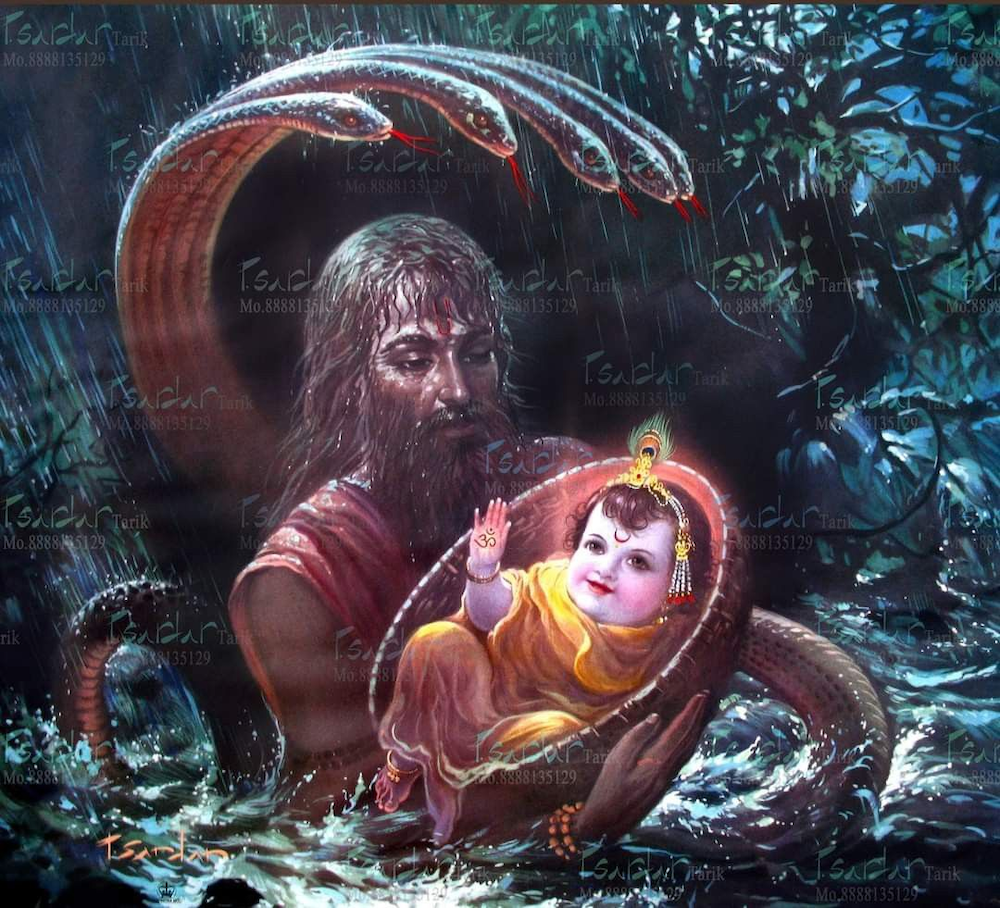
Krishna and the Passage of Protection
In the Mahabharata, Yamuna is hailed as one of the seven tributaries of the Ganges, her waters invoked in rituals, austerities, and ceremonies for their purifying power. One of the most well-known stories from the Padma Purana tells of two brothers who lived lives of indulgence and were subsequently killed by beasts. Upon reaching Yama’s court, the younger brother could enter Svarga (heaven) because he had bathed in the Yamuna for two months.
The Vamana Purana tells the tale of Lord Shiva, who, stricken with grief over the death of his wife Sati, sought solace in the Yamuna. His sorrow caused the river to turn dark, a representation of the deep, mourning bond between Lord Shiva and nature. The darkness of the river’s waters thus became a symbol of both grief and grace, embodying the profound emotional connection between the divine and the elements.
Asit Muni, a revered sage, is said to have bathed daily in both the Yamuna and the Ganges. However, as he grew older, he could no longer make the arduous journey to the Ganges. In response to his devotion, a miraculous event took place: the Ganges appeared beside the Yamuna, allowing Asit Muni to continue his sacred bathing. This divine manifestation is believed to be connected to the hot spring Surya Kund, located near the Yamunotri Temple.
The nearby Markandeya Temple holds immense spiritual significance as the place where Sage Markandeya is believed to have composed the Markandeya Purana. The site radiates divine energy, further elevating the region’s sanctity, and is revered by pilgrims who come to seek blessings from this great sage.
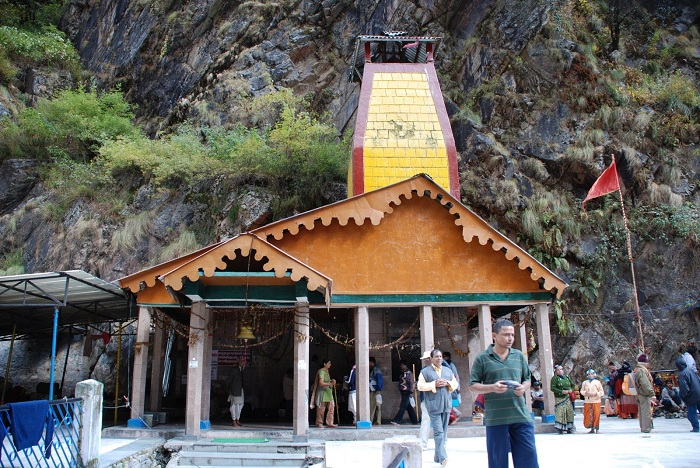
Yamunotri Temple
Built in 1839 by King Sundarshan Shah of Tehri, the Yamunotri Temple stands as a historical and cultural emblem of the region. Although a small shrine existed on the site earlier, this iconic temple on the left bank of the Yamuna was later reconstructed by Maharaja Pratap Shah of Tehri Garhwal. The temple enshrines a black marble deity of Goddess Yamuna and showcases resilience, having withstood multiple instances of destruction due to natural calamities. Snow, floods, and an earthquake ravaged the temple over time, but it was ultimately rebuilt in the 19th century by the Rani of Jaipur.
Her reconstruction included typical North Indian architectural elements, including a distinctive conical shape that reinforces the temple’s historical and spiritual stature. Crafted to endure the unforgiving Himalayan climate, the Yamunotri Temple’s sloping roofs are designed to resist heavy rainfall and snowfall. The facade is beautifully adorned with carvings that depict Hindu mythological stories, enriching the temple’s cultural significance. Outside the main entrance, a sacred rock formation known as Divya Shila invites worshippers to offer their prayers before entering the temple, symbolizing a spiritual cleansing and connection to divine energies.
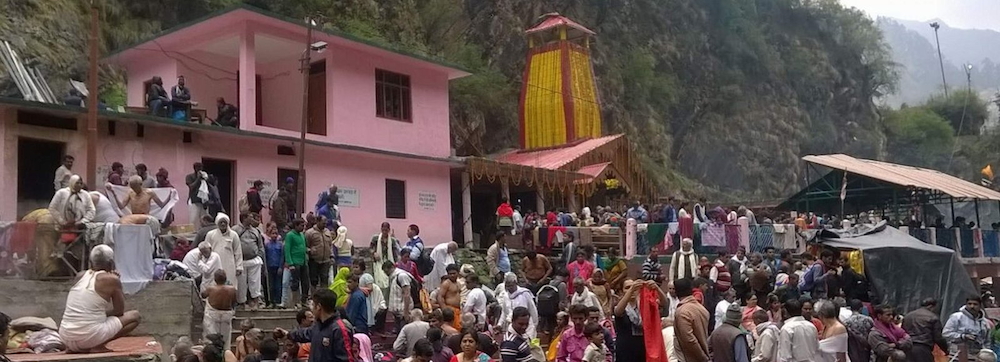
Yamunotri Temple on Akshaya Tritiya
The temple’s religious calendar aligns closely with significant Hindu festivals. Each year, the Yamunotri Temple opens on Akshaya Tritiya in May, welcoming pilgrims to seek the blessings of Goddess Yamuna, and it closes for the winter season on Yama Dwitiya, the second day after Diwali in November. The actual origin of the Yamuna River is located about 4,421 meters (14,505 feet) above sea level, at a site too remote for regular visits. As a result, the temple itself has become the primary site for offerings and pujas dedicated to the Yamuna. Two hot springs near the temple, Surya Kund and Gauri Kund, provide relief and comfort for pilgrims and hikers alike. Surya Kund, with its boiling water, is renowned for its high temperature, which is even used to cook rice and potatoes as offerings, or prasad. Gauri Kund, with milder waters, serves as a ritual bathing site. These unique hot springs have inspired a tradition at Yamunotri where pilgrims cook raw rice in the thermal waters, later offered as sacred prasad to Goddess Yamuna, adding a distinctive layer to the temple’s rich cultural and spiritual heritage.
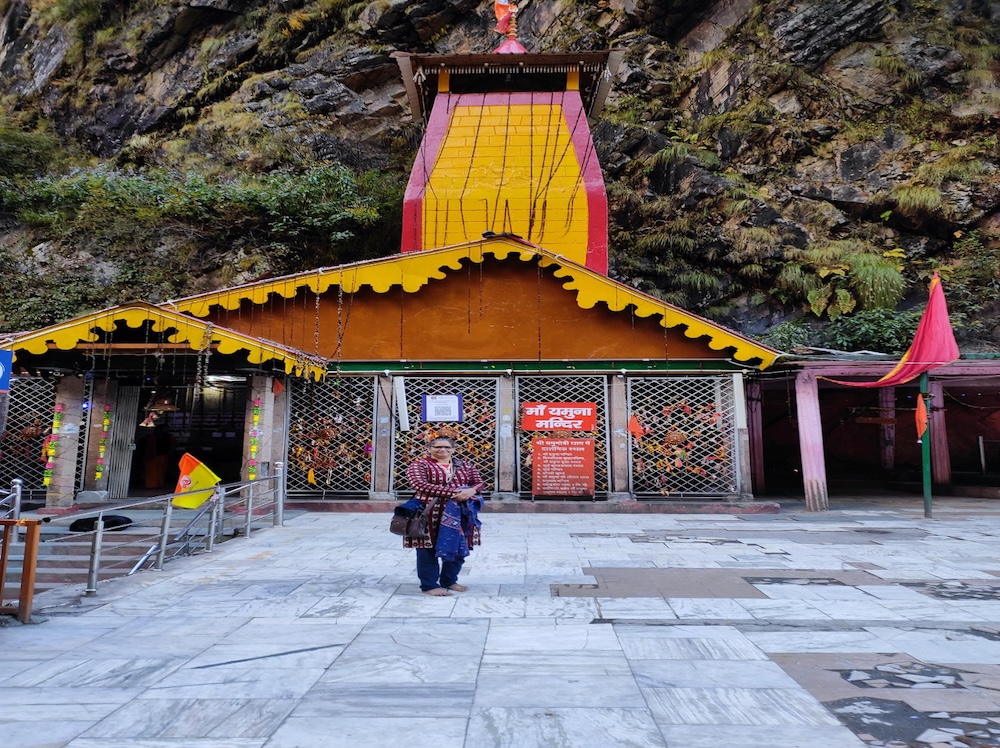
Yamunotri Temple
Set off on a spiritual adventure to the sacred Yamunotri Temple with BizareXpedition! Nestled amidst the majestic Garhwal Himalayas, our Yamunotri trip brings you close to the divine with an experience filled with scenic beauty, cultural richness, and deep spiritual significance. With over a decade of expertise and industry recognition, we offer a comprehensive, affordable pilgrimage that ensures every traveler finds peace and purity in the holy waters of Yamuna. Discover not only the traditional charms of Yamunotri but also the warmth of local communities through our Yamunotri Yatra, Do Dham Yatra, or Chardham Yatra packages.
Note:
The Yamunotri Temple is open six months each year, closing during the harsh winter season. In 2024, the temple closed on November 3, coinciding with Bhai Dooj. It will reopen for pilgrims on April 30, 2025, and close again on October 23, 2025. During the off-season, the idol of Goddess Yamuna is moved to the nearby village of Kharsali in Uttarkashi district. Pilgrims can visit Kharsali for darshan, where the idol will remain until April 29, 2025.
With over ten years of experience organizing unforgettable pilgrimages, BizareXpedition offers you trusted expertise in the divine landscapes of the Himalayas, making your Yamunotri trip smooth and memorable.
Our dedication to exceptional service has earned us accolades from leading travel platforms like TripAdvisor and recognition from government bodies, ensuring a journey you can embark on with confidence.
We believe that spiritual journeys should be accessible to all. That’s why we offer budget-friendly Yamunotri tour packages that cover everything, allowing you to connect with the divine without stretching your budget.
Our Yamunotri trip packages provide outstanding service without compromising quality. From comfortable accommodations to well-organized itineraries, we ensure your pilgrimage is worry-free and filled with spiritual fulfillment.
Choose from our thoughtfully designed packages for an enriching experience, including details on Yamunotri tour cost, itinerary, and inclusions. Let BizareXpedition guide you on a journey of peace, devotion, and discovery at Yamunotri Temple!